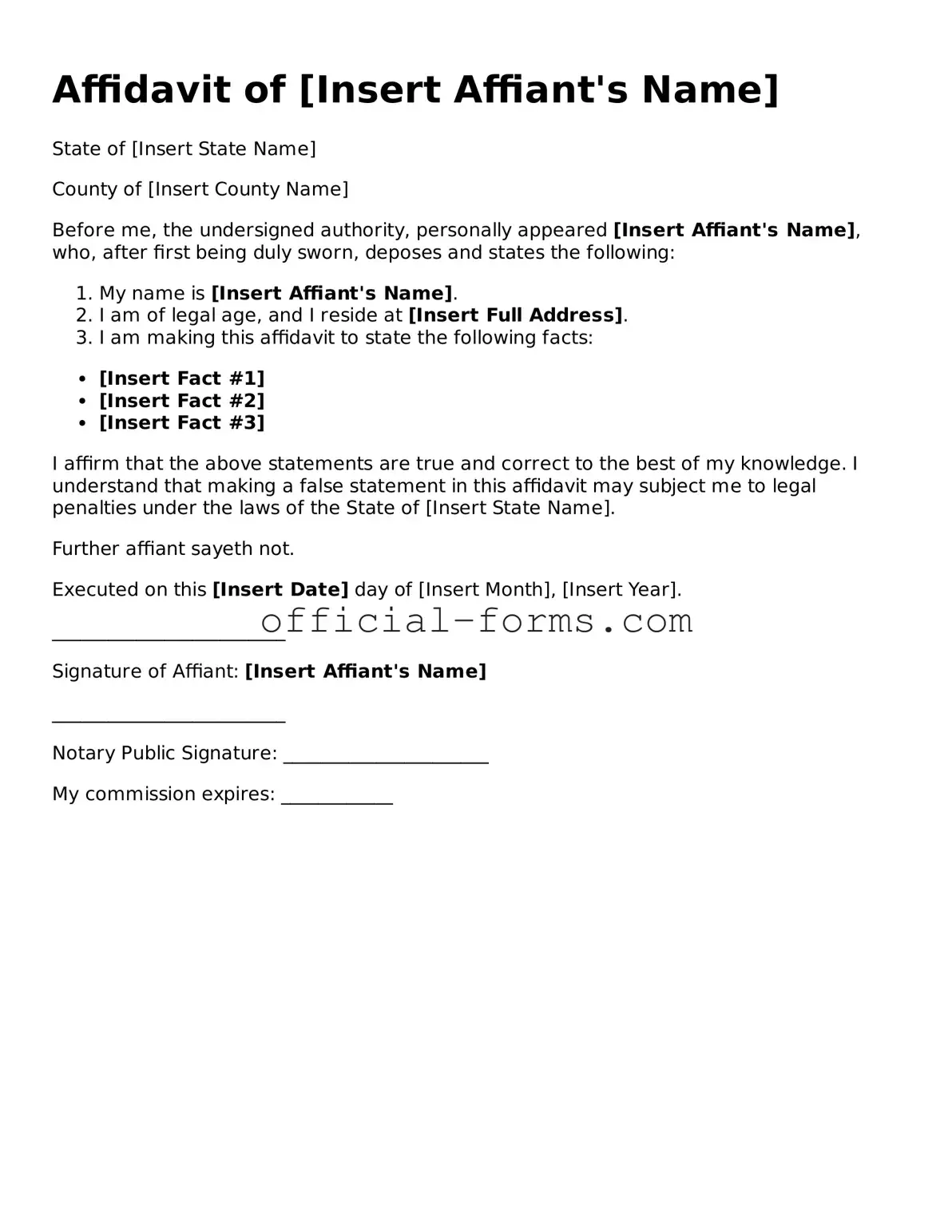Completing an affidavit form can be a straightforward process, but mistakes can lead to delays or complications. One common error is failing to provide accurate personal information. This includes the individual's full name, address, and contact details. When this information is incorrect, it can create confusion and hinder the processing of the affidavit.
Another frequent mistake is neglecting to sign the affidavit. A signature is crucial, as it verifies that the information provided is true to the best of the individual's knowledge. Without a signature, the affidavit may be considered incomplete and may not be accepted.
People often forget to date the affidavit. Including the date is essential, as it establishes when the affidavit was executed. This can be particularly important in legal contexts where timing may affect the validity of the document.
Some individuals fail to have the affidavit notarized. Notarization adds a layer of authenticity and can be a requirement in certain situations. Without this step, the affidavit may not hold up in court or other official settings.
Providing insufficient details about the matter at hand is another common oversight. An affidavit should clearly outline the facts or claims being made. Vague statements can lead to misunderstandings and may weaken the document's effectiveness.
People sometimes overlook the requirement for witnesses. Depending on the jurisdiction and the specific affidavit, having one or more witnesses sign the document may be necessary. This step can help validate the claims made within the affidavit.
Another mistake is using unclear language or jargon. An affidavit should be written in plain language that is easy to understand. Complicated terms can confuse readers and may result in misinterpretation of the information presented.
Failing to review the affidavit for errors before submission can lead to significant issues. Typos, grammatical mistakes, and inconsistencies can undermine the credibility of the document. A thorough review can help catch these errors early.
Some individuals do not keep copies of the affidavit after submission. Retaining a copy is important for personal records and can be useful if any questions arise later regarding the contents of the affidavit.
Finally, not following specific instructions related to the affidavit can result in problems. Each affidavit may have unique requirements based on its purpose or the jurisdiction in which it is being filed. It is essential to carefully read and adhere to any guidelines provided.
